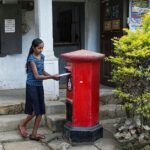In April 1989, a proposal was submitted to the Government of Sri Lanka through the University Grants Commission and Ministry of Higher Education, Science & Technology. It called for a network that would connect every university in the country. At the time, this was a momentous undertaking, especially considering the fact that what we know as the internet, did not exist in Sri Lanka and computers themselves were in their infancy. Nevertheless, in 1990, under the leadership of Prof. Abhaya Induruwa, the Lanka Experimental Academic and Research Network was born. Later, it came to be known as the Lanka Education and Research Network (LEARN) which celebrates 3 decades of networking today.
Since its inception, the LEARN network has come a long way. Today, it has been incorporated as a company and is the NREN (National Research and Education Network) of Sri Lanka. It currently offers connectivity and various other services to 45 educational and research institutions. This list includes the UGC, all UGC-funded state universities, government institutes, private and semi-government institutes, the Ministry of Higher Education, and national research institutions.
The origins of LEARN
When it was conceptualized, there were no large-scale networks in Sri Lanka. In the early 1990s, the only networks that existed were the few Local Area Networks (LAN) within Universities. Such networks connected a few computers within the confines of a building. Whereas, the proposal Prof. Abhaya Induruwa submitted spoke of connecting entire universities across vast geographical distances. It would be the very first Wide Area Network (WAN) in Sri Lanka.

Despite the challenge, Prof. Induruwa was ambitious and under his leadership, work began on the LEARN network inside the University of Moratuwa in the early 1990s. Alongside him was Prof. Gihan Dias, and they were later joined by Dr. Nimal Ratnayake, Dr. Ruvan Weerasinghe, Dr. Ajantha Atukorale, and Mr. Harsha Wijayawardhana. In June of that same year, LEARN introduced LEARNmail, which was the first dedicated email service for Sri Lankan academics and researchers.
However, it would take 5 years of hard work before the Lanka Education And Research Network would be operational. When it went online in 1995 LEARN utilized 64kbps radio links to connect the University of Moratuwa, the University of Colombo, and the Open University of Sri Lanka. Thus, LEARN became the first IP-based WAN in Sri Lanka. Of course, this was merely the first phase of the project.

Around this time many telecom ISPs began operations in Sri Lanka as well. Subsequently, in 1996, LEARN gained internet connectivity via a permanent link provided by SLT. Between 1996 and 1998, 3 more educational institutes were connected to the LEARN network via 64kbps leased lines. The network was growing and so the LEARN Association was established to streamline the management and administration of the network.
By 1999, practically every university in Sri Lanka was connected by LEARN. It was only 5 years prior, that such a feat was thought to be impossible. As the 1990s ended and the 2000s began, LEARN’s bandwidth was upgraded to meet the ever-increasing data consumption requirements by academics. Later in 2009, the LEARN Association was transformed into an incorporated company as LEARN (a Company Limited by Guarantee without the suffix “Ltd” at the end of the name).
The evolution of LEARN beyond Sri Lanka
Today, as LEARN celebrates 30 years in operation, it offers connectivity to 45 educational and research institutions and has a total bandwidth of 20Gbps. A far cry from the 64kbps connection utilized to connect just 3 universities in 1995. However, as the requirements of the research community evolved, the network evolved as well.
Recognizing these evolving needs, alongside connectivity, LEARN offers a host of services to local research institutes. These services include video conferencing facilities, Voice of IP (VoIP) connectivity, Federated Identity Access, an international education roaming service (aka eduroam), and a Technical Assistance Center offering engineering support to its member institutes.

Beyond these services, the organization has formed strong partnerships to support local researchers. Through its partnership with eduroam LEARN offers its international WiFi-roaming service. Similarly, the organization has partnered with regional and international research bodies such as Trans Eurasia Information Network (TEIN), Asi@Connect, the National Knowledge Network (NKN) of India, SingAREN, and many more.
These partnerships have given local researchers access to networks connecting international educational and research institutes. Through these networks, local researchers have greater access to a global pool of knowledge and can better collaborate with their international counterparts to bring about innovation. For such purposes, the LEARN network offers dedicated 3Gbps of connectivity to these international academic networks.
The future of LEARN
Over the past 3 decades, LEARN has played an integral role behind the scenes to connect local researchers with the rest of the world. However, the network was born in a time when internet access in Sri Lanka was virtually non-existent. Today, practically anyone can access the Internet freely with a basic smartphone.
With this ubiquitous access to the internet, the world has changed dramatically. Nevertheless, this does not necessarily mean internet access is always cheap. Across the world, roaming prices for mobile data access remain high. To tackle this, LEARN is part of the education roaming (eduroam) initiative, which offers viable and economical internet access to end-users during their travels globally. Alongside this, the organization is also working towards facilitating free Internet access to academics and researchers over public WiFi networks throughout the country at a local level.

The organization is also tackling more challenges closer to home, such as the poor integration of technology in education. It identified that many previous approaches to introducing technology into classrooms were highly technical. This halted many initiatives as teachers simply did not possess the required level of technical skills. Hence, as the local NREN, it’s working to develop simple technological tools for teachers to utilize in classrooms. Technological investment in this sector is limited but vital as Sri Lanka is a lower-middle-income country.
As rising temperatures result in global climate change, the organization must also explore means of reducing its carbon footprint. Technology may allow us to go paperless. But the electricity needed to run servers and other infrastructure still produces CO2 emissions. Globally we’ve witnessed tech giants like Google, Facebook, and Apple switching over to renewable energy sources to power their infrastructure. Similarly, LEARN too is exploring initiatives to utilize optical networks in combination with renewable energy sources to meet the computing needs of researchers in the future.

Ultimately, the very first Wide Area Network in Sri Lanka has come a long way. By facilitating international collaboration, it has reshaped the way local academics conduct research. As LEARN celebrates its 30th anniversary, it does so in a different world from when it was born. As the world evolves, so too must the fundamental mission of such networks.
To identify how its mission should evolve, the organization managing this network has taken on fresh challenges. None of them have simple solutions and it will take time to find solutions to these challenges. However, 30 years ago, the thought of creating a network to connect every university in Sri Lanka, was considered to be equally challenging. Despite the odds, LEARN conquered the challenge and remains optimistic about conquering the challenges that lie ahead.







GIPHY App Key not set. Please check settings